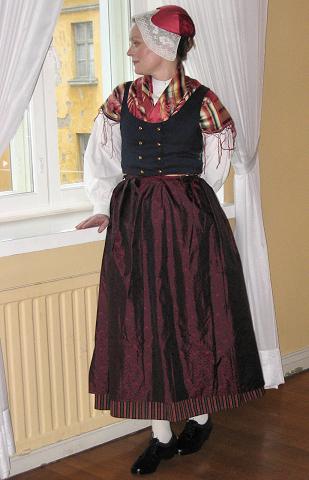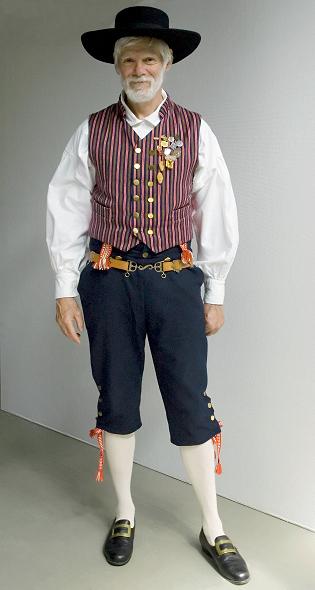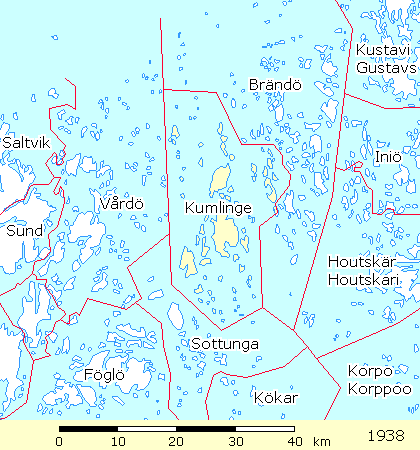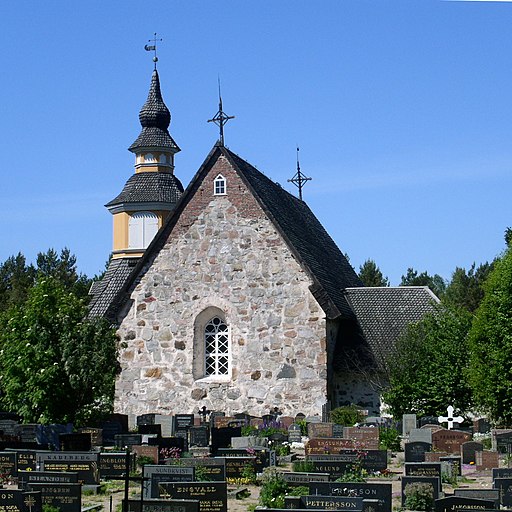Åland Islands
Kumlinge
Adopt a Parish
Do you know something about this parish that is not yet included on this page? Click here to adopt this parish and help expand the information available on our website!
Of Interest
- Kumlinge is a group of over 800 islands; of which four are inhabited.2
- Kumlinge is the name of the largest island within the parish. It means “Rocky Passage”. 1
Parish History
- Likely was a chapel under the Sund Parish at some time
- Likely an independent parish by 1478
Villages & Farms
Click on the village name below to display the farms within that village.
- Hinders
- Pellas
- Andersas
- Nybondas
- Jakopos
- Bostings/Pellas
- Lames
- Hermas
- Klasas
- Nybondas
- Staxvik / Sigfrids
- Andersas
- Gunnars
- Markusas
- Gästgifvars
- Simas
- Länsmans
- Dansos
- Jonsos
- Ollas
- Klemes
- Pehrhindersas
- Vesterbyas
- Alges
- Nybondas
- Klockars
No farm names listed
- Mattsas
- Månsas
- Jönsos
- Klasas
- Dansas
- Simas
- Henrikas
- Thomasas
Folk Dress
Each parish has a unique folk dress. Parish folk dress can be recognized by its style, colors, and patterns.


Resources:
- Kumlinge, https://en.wikipedia.org/wiki/Kumlinge
- Kumlinge, https://www.aland.travel/kumlinge-en.html
- Kumlinge Church, https://www.kyrkor.ax/churches/kumlinge-church/
- Kumlinge Church, https://www.brandokumlingeforsamling.fi/kyrkor-och-lokaler/brando-kyrka/kumlinge-kyrka
- Kumlinge Church image: https://commons.wikimedia.org/wiki/File:Kumlinge-Kyrkan_fr%C3%A5n_%C3%B6ster.JPG
- Kumlinge Folk Dress image, Brage costume agency, Woman’s – https://www.brage.fi/sve/draktbyra/draktbyran/folkdrakter/view-163648-59 Man’s – https://www.brage.fi/sve/draktbyra/draktbyran/folkdrakter/view-163648-60
- Kumlinge Parish, Genealogical Society of Finland, HisKi project, http://hiski.genealogia.fi/hiski/fr4lat?en+0243
- Kumlinge Parish Communion Records, https://app.arkivdigital.se/volume/v199320?image=1
- Åland landkapsarkiv, Land Records, https://www.arkivet.ax/en/digital-material/search-land-register



